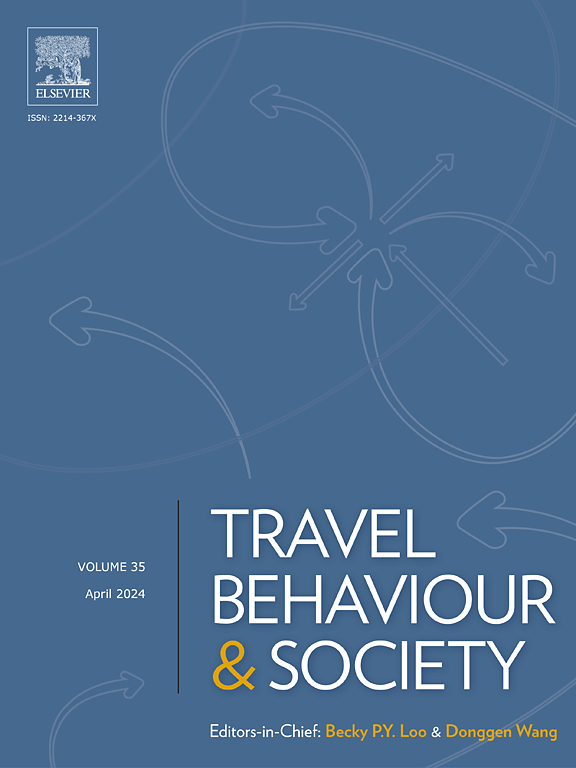Exploring collective activity space and its spatial heterogeneity using mobile phone signaling Data: A case of Shenzhen, China
IF 5.1
2区 工程技术
Q1 TRANSPORTATION
引用次数: 0
Abstract
The planning ethos of providing proximity-based services to all inhabitants has been prevailing recently, and underlines the importance of knowing areal differences in collective activity space (AS) of populations. Mobile phone signaling data (MSD) has great potentials for this end, especially in mega-cities with fast changing and spatially varying demographic composition. However, two problems need to be addressed when applying MSD-based AS measurement for planning practices, including the identification of regularly visited locations and the selection of measure indices. This paper proposes a three-step workflow to apply the MSD to measure local collective AS with considering addressing the problems. This three-step workflow aims to illustrate the procedure of using MSD to measure collective AS for supporting planning practice in urban China, with clarifying some key concerns when doing so. We apply the workflow to examine the spatial heterogeneity of the collective AS in Shenzhen City and discuss the transferability of the workflow in different social and institutional contexts.
利用手机信令数据探索集体活动空间及其空间异质性:中国深圳案例
为所有居民提供就近服务的规划理念近来十分盛行,这也凸显了了解人口集体活动空间(AS)的区域差异的重要性。移动电话信令数据(MSD)在这方面具有巨大的潜力,尤其是在人口构成快速变化、空间差异较大的特大城市。然而,在规划实践中应用基于 MSD 的活动空间测量时,需要解决两个问题,包括识别经常访问的地点和选择测量指数。本文在考虑解决这些问题的基础上,提出了应用 MSD 测量地方集体 AS 的三步工作流程。该三步工作流程旨在说明使用 MSD 测量集体自适应状态以支持中国城市规划实践的程序,并澄清测量过程中的一些关键问题。我们运用该工作流程考察了深圳市集体自治的空间异质性,并讨论了该工作流程在不同社会和制度背景下的可移植性。
本文章由计算机程序翻译,如有差异,请以英文原文为准。
求助全文
约1分钟内获得全文
求助全文
来源期刊

Travel Behaviour and Society
TRANSPORTATION-
CiteScore
9.80
自引率
7.70%
发文量
109
期刊介绍:
Travel Behaviour and Society is an interdisciplinary journal publishing high-quality original papers which report leading edge research in theories, methodologies and applications concerning transportation issues and challenges which involve the social and spatial dimensions. In particular, it provides a discussion forum for major research in travel behaviour, transportation infrastructure, transportation and environmental issues, mobility and social sustainability, transportation geographic information systems (TGIS), transportation and quality of life, transportation data collection and analysis, etc.
 求助内容:
求助内容: 应助结果提醒方式:
应助结果提醒方式:


